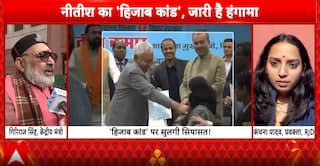Chinese Checkers: How India should play to win the game

The first battleground has already been laid in South Asia. For good reason, China sees South Asia as a great vulnerability in Indian foreign policy. Part of this is due to unrepaired colonial legacies, but part is also due to the fact that India treats its neighbours as threats rather than as opportunities. India’s long-running hostilities with Pakistan, and its continued fight against cross-border terrorism from that country, means that almost all strategic thinking from New Delhi runs in some way through Islamabad. That has ended up muddying the way Indians think of pretty much all their neighbours, even wheresuch threats don’t exist. The jargon typically used to describe India’s objectives in the neighbourhood consists not of cooperation or camaraderie, but ‘primacy’ and ‘strategic autonomy’.
This has been true in both theory and practice. Most of India’s friendship treaties in the subcontinent have typically included an explicit mention that a neighbouring territory shall not be used for activities that may threaten Indian national security. (On the other hand, there is much less substance on, say, actual economic or political integration, in the form of trade, technology transfer or joint anti-terror operations.) Words matter in diplomacy, and an explicit treaty obligation to not being a threat can only mean that one is perceived as a threat.In practice, consequently, neighb
This cynical approach has hurt India more than anybody else. Today, India’s neighbours are inherently suspicious of anycooperative behaviour with New Delhi, which they see as dependence and hegemony. Take the latest episode in Bhutan itself – a country which most Indians view favourably and upon which New Delhi has long bestowed largesse. In the wake of the ongoing standoff on Bhutan’s border, a risk management firm ENODO conducted a comprehensive analysis of public opinion in the country. ENODO examined over 25,000 tweets, 351 political cartoons, 127 Facebook Live videos, 20 blogs and 12 magazine covers. The result was telling: about 76% of Bhutanese on Twitter and 65% on Facebook questioned what they saw as their country’s over-reliance on Indian diplomatic channels, particularly regarding Bhutan’s dealings with China.
The more India tries to involve itself in a neighbour’s bilateral relations with China, the more it seems likely to drive its neighbours off to Beijing. And China sees this mutual distrust in South Asia as a fertile opportunity. In recent times, Beijing has looked to isolate India by offering to balance Indian influence in the region, through political, economic and infrastructural assistance. Then, it reinforces its superiority over India through provocations along the border, meant in part to periodically signal its credibility as a balancing power in South Asia.
The only way India can retain influence in South Asia against Chinese competition is by rebuilding lost trust in the neighbourhood. India’s continued perception of its neighbours as threats has hindered its ability to bring about substantive cooperation in the region. Despite being home to one of the largest and most globalised economies in the developing world, South Asia remains one of its least integrated regions.And this is largely because South Asians tend to think of economic integration with India as a potential loss of sovereignty, and a concession of a bargaining chip to New Delhi.
But aside from this obvious need to promote trade in the region, New Delhi also needs to find common global interests with its neighbours. Rarely, if ever, does India organise its foreign policy agenda in a manner that highlights the critical concerns of its neighbours – Sri Lanka’s desire to retain ownership over its process of reconciliation with the Tamils, for instance, or Maldives’ concern over climate change and rising sea levels. Most of these causes are typically delegated to the much larger umbrella of the Non-Aligned Movement (NAM), the G-77, or other developing world forums (where, ironically, China tends to involve itself as an organiser).
This is a fertile area for foreign policy reform. India must hope to achieve foreign policy coordination in South Asia by making common cause among members of the region. It ought to use its increasing global influence for the benefit of its neighbours, play the role of their global spokesperson, and support them on political, economic and social issues that matter to them. In time, the objective ought to be to help neighbours see positive gains for themselves in India’s global rise, rather than a threat to their sovereignty.
Too much of Indian strategic thinking on the neighbourhood has been held hostage over the years by the festering uneasiness over Pakistan. But by all objective standards, the rest of India’s neighbours pose minimal threat to its national security. To the contrary, they see no gain from hostility with the largest economy in their proximity. India must integrate South Asia, with or without Pakistan’s participation. That is its greatest national security need.
(Mohamed Zeeshan is a scholar in International Affairs at Columbia University, and the Digital and Online Director of the Columbia Journal of International Affairs. He tweets @ZeeMohamed_) Disclaimer: The opinions, beliefs and views expressed by the various authors and forum participants on this website are personal and do not reflect the opinions, beliefs and views of ABP News Network Pvt Ltd.

























